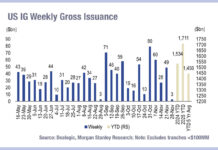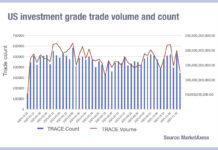There are huge variations in investment and trading activity across quantitative strategies, the Fixed Income Leaders Summit heard in Amsterdam on Wednesday, and the value tha trading provides varies as well.
Peter Lindroth, quantitative portfolio manager at AP2, Andra AP-Fonden, manages a developed market (DM) credit fund, and co-manages an EM sovereign fund.
“We run those models purely systematically, with almost no human input except in EM if some crazy things happen in the market. Otherwise, we try to not touch it, we press the button. We would rather adjust the model.”
He also noted that his funds only trade once a month, with the trades adding value in as much as the application of the new investment deteriorates over time.

Matthias Busuttil, senior portfolio manager at Fisch Asset Management said that for his funds, trading definitely adds value.
“We don’t look at it as an operational function within the company,” he said. “It has to be ingrained in the investment process, and it is a systemic part of the of the process as well. So the PMs are involved in the trade negotiations, and we still rely heavily on the expertise and experience of traders to source liquidity, find where bonds are sitting, so on and so forth, even retaining relationship with counterparties, securing allocations in primary market deals. All of this still remains largely relationship based. We give targets of where trades make sense, and that guides where we need to strike. We really rely on the proper execution to extract value.”

As a passive quant fund manager, Deepak Bharti, head of EMEA & APAC FI PM for ETF & IS at Invesco.
The systematic indexing funds rebalance at month end, but the passive nature of investing does not mean trading is passive he explained.
“We are very opportunistic about it,” said Bharti. “We call it ‘smart passive’, in some sense ‘smart indexing’. So as I said, corporate actions, new issuances, participating in primaries, doing ‘in-kinds’, and trading earlier or later than the benchmark. We apply all sorts of techniques to not move the big flows in the street, so we are smart about how we get the execution done. We send it to trading, but we time that send accordingly. It’s not just push it out.”
©Markets Media Europe 2025













